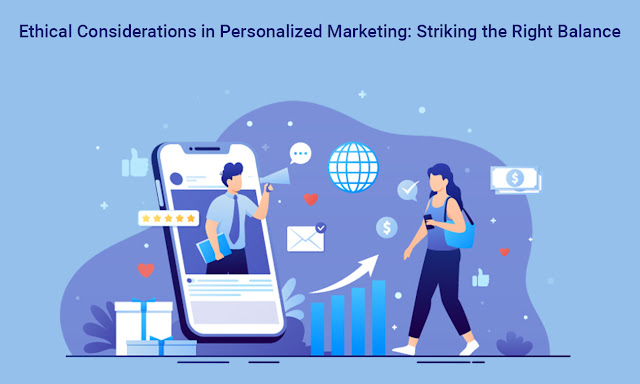Debunk Common Myths About Graphic Design
Since its inception, graphic design has advanced significantly. Without a question, it continues to be a type of continually changing art. However, a few misconceptions regarding graphic design continue to circulate. Therefore, we will go ahead and disprove them in this blog. But first, a little more background on the discipline's history.
Graphic design originally appeared in the 1920s, and it has progressed rather spectacularly and in leaps and bounds since then. William Dwiggins, an illustrator and book designer, is credited with coining the term "graphic design." He used the phrase to characterize the work he did in his typography, illustrations, calligraphy, and book designs for printed forms of communication. When the 1950s arrived, the phrase was widely used to describe the production of many other visual products as well. This covered things like billboards, street signs, and print advertisements. Today, graphic design is used for various things beyond just printed documents, including digital and virtual reality content.
Why Is It Essential To Debunk These Myths About Graphic Design?
There are numerous ways graphic design contributes to the development and management of a brand. Some instances are provided below.
Your brand's ability to make a strong and enduring first impression on buyers is aided by graphic design.
Consistency contributes to establishing your brand's credibility.
Sharing complex information is made simple and easy with the use of graphic designs.
Using your graphics creatively allows you to effectively keep your competitors away and stand out.
With the proper application of graphic design, you can effectively communicate with your audience and convey the story of your business.
Let's Debunk Some Graphic Design Myths
You Are A Designer If You Have Photoshop
Even if everyone had access to pens, that wouldn't necessarily make us all writers. The same reasoning holds here as well. Knowing the basics and having access to design software is insufficient. You probably require several types of designs if you run a business. And you'll need the knowledge to carry them out effectively. If words like the rule of thirds and tracking kerning are as common to you as choosing a font and color scheme, you might wish to include some in your designs.
Decorating Is The Essence Of Graphic Design
You must be knowledgeable about best practices, the preferences of your target audience, and the rules of the channels and platforms you'll be employing while designing something for your brand. It takes more than just adding effects here and there to make anything look great. Designs must make perfect sense and work well with the brand they are meant to represent. Consider the logo for a certain brand. It should combine design, strategy, and vision. The design must be intentional and adhere to company standards.
There Is No Ongoing Training Or Learning Required For Graphic Design
Over time, graphic design has continued to change. However, there is a ton to learn about each part of it. There are various expertise that can be mastered, even if you concentrate on one kind of design. If you employ a designer, you should encourage them to sign up for classes or workshops so they may brush up on new skills. And if you employ designers, be sure to learn what areas of expertise they have.
A Graphic Creation Is Simple
The fact that some of today's most recognizable logos are very straightforward, like those for Apple, BMW, or even Nike, may contribute to the misconception that graphic design is easy. But in this line of work, speed and accuracy are key, and the seeming simplicity only develops after a great deal of expertise.
Always Attempt New Ideas When It Comes To Graphic Design
Yes, you will need to develop new ideas for your brand and invest in graphic design. There is a time and place for this, though. Your designs should adhere to your brand's visual identity and style guide once you've established them. You can certainly experiment or occasionally add new pieces, but you'll want to make sure you're taking a sensible risk. In other words, you want to make sure that it will appeal to your audience while yet appearing to be related to your brand. In any scenario, make sure to let your designers know what you want them to include and leave out as well as your objectives.
Design Needs To Be Trendy
Trends can undoubtedly help attract attention. But you should constantly consider whether a particular trend is appropriate for your brand. Will it enhance and support what you're attempting to say? Or will it merely obscure it? You should err on the side of doing things that will make your efforts more effective. Therefore, bear this in mind while you talk with your designers about your project. You'll be caught in a cycle of the poor design if you just insist that your designers always create in line with what's fashionable. And while shoddy design can appear appealing, it shouldn't be used if it doesn't accurately convey your brand's messages.
Graphic Designers Know Everything
Yes, designers are skilled at doing their jobs well. But that doesn't mean they can read your thoughts. The best designs are the product of an open line of communication and a designer having a clear creative brief. You're more likely to have fruitful conversations and get excellent designs if your designer knows that you're open to comments and inquiries about your brief. Even if adjustments are necessary, they will probably be more in line with what you want.
Designers Have Complete Creative Freedom
Most designers may have unrestricted creative freedom and total creative power. But in reality, that is untrue. Designers are constrained by the choices of their clients and the limitations of any specific design kind. A client might, for instance, offer a specific design as an example of what they would want. And using their client's brand guidelines or design brief, their designer will have to rethink it.
One illustration of the limitations imposed by different design types is the fact that a billboard cannot have the same quantity of text and graphics as a flyer. Sure, that could seem possible given the magnitude. Thought must be given to the end user. There will be a proximity reading of a flyer. A billboard that is being passed at a distance will be seen in a matter of seconds or minutes. In the end, a design achieves its best outcomes when a client and their designer work together.
Graphic Design Can Make You Wealthy
According to Sun Tzu, a Chinese philosopher and military strategist, "Strategy without tactics is the slowest way to victory. Without a strategy, tactics are only pre-defeat noise. Your graphic design is part of your strategy when it comes to marketing. Furthermore, no amount of stunning design can yield the desired results if the proper tactics aren't used. Therefore, as you set out to complete your graphic design work, make sure that you are clear on your business and campaign goals. Your designer will be able to assist you in moving forward with your campaigns more quickly and effectively if you have a clear plan in mind.
Customers Are Always Right
Yes, in some cases. About everything? Not at all. An important part of the graphic design process is being guided by the client. Having said that, they will be constrained in some ways because of the risks they are aware of. This is where your designer's imagination can help. Be receptive to their comments, and if you can, make time in your schedule to review various design iterations. This is crucial if you're asking for a type of design that you've never had before. There may be limitations that you are completely unaware of. Or components that you could be missing that would make your design appear amazing.
A Design Can Be Revised In A Matter Of Seconds
Customers frequently inquire as to why it takes the designer more than a few minutes to respond when they want modifications. It largely relies on the proposed modifications. A text edit can be completed fast, yes. However, there are some exceptions, such as when you want to change the design by adding or removing a lot of text. To ensure that all of your needs are met in this instance, there may be a significant amount of reworking required. The process of resizing a design or providing a digital design for print or vice versa is another instance in which changes can take longer than expected.
The layout may alter significantly depending on the design's dimensions and what it has to be adjusted or adapted for. In a world where we have services like Amazon Prime as well as other similar services, we're not used to waiting all the time. However, having a brief discussion with your designer will enable you to ascertain the timing and rationale for your need to wait for revisions.
A Company's Mission Statement Must Always Be Clear In Its Logo
Your logo is the essence of your marketing and it reflects your brand. But it's not necessary to go into detail about what you do. Your brand's ethos should be reflected in your logo. And convey what you are offering or standing for in the simplest way possible. You might do this by just using the name of your brand.
In actuality, the majority of designers nowadays work to create logos that will give their clients superior recall value. Yes, having a distinctive logo is crucial, but it shouldn't be overly complicated to the point of being confusing. Consider Apple and Starbucks as two examples of companies whose logos don't accurately represent what they do. But they have steadily improved their logos through their marketing activities. And right now, you immediately connect them with a variety of meanings.
Only Still Images Are Used In Graphic Design
A vast variety of applications can be found for graphic design. In reality, still images can be created specifically for use in a video animation. The restrictions we put on graphic design frequently result from our ignorance. In addition to your website, GIFs and films can be utilized in a variety of contexts, including social media and email newsletters. The majority of graphic designers work on GIFs, YouTube visuals, carousel ads for social media, and similar projects. Therefore, ask your designers what they can come up with for you rather than just telling them what you already know.
We've attempted to bust some of the most prevalent myths about graphic design by comparing myths and facts. We also hope that we've emphasized how crucial a role it plays in brand development and marketing. Consider whether there's more to the tale the next time you hear a myth about graphic design. And speak with your designers, who are your most reliable resource on the matter!




Comments
Post a Comment